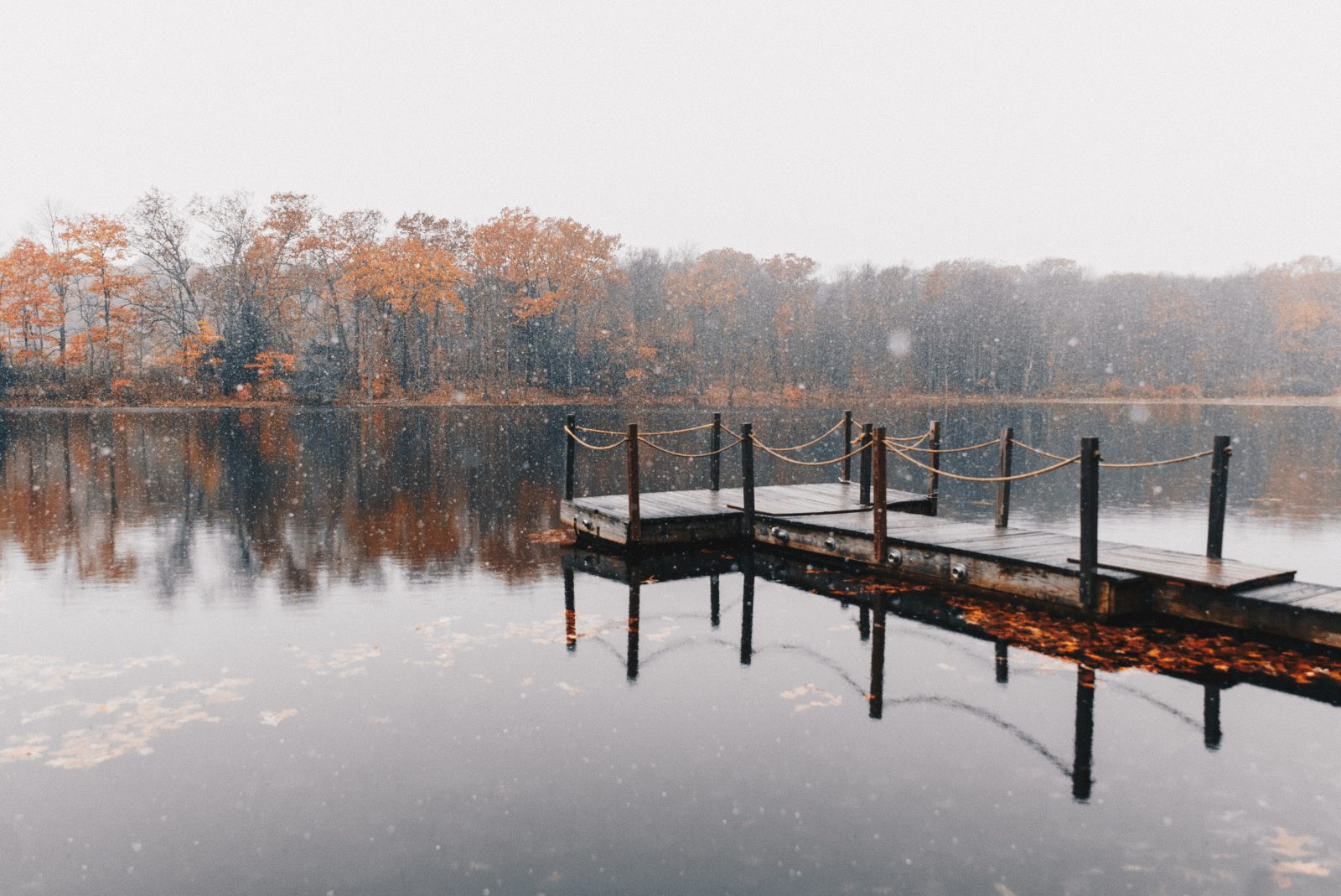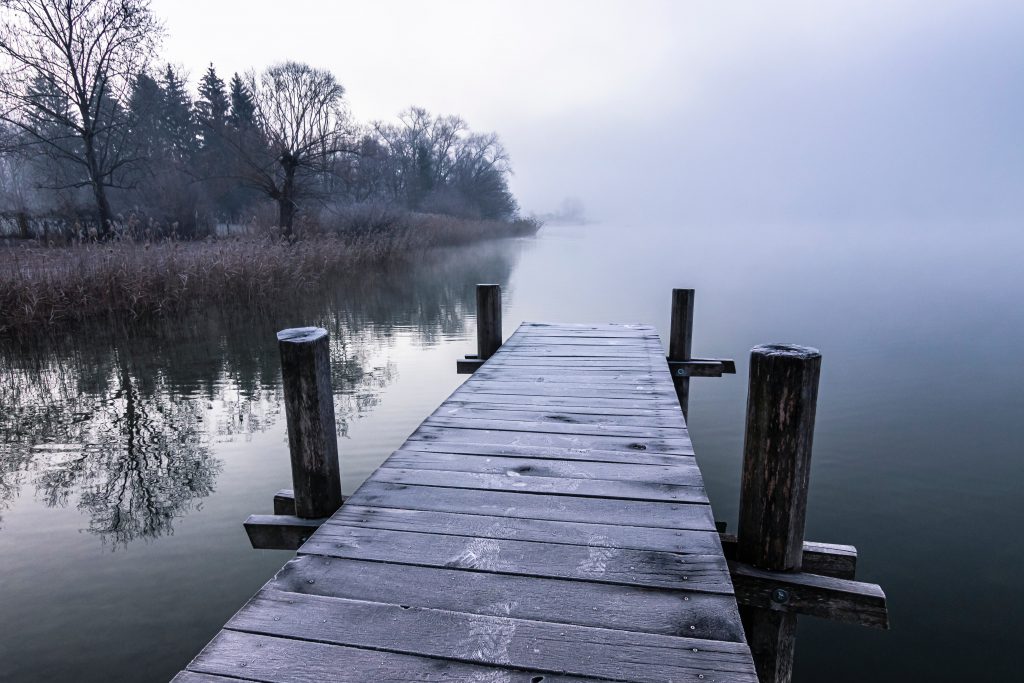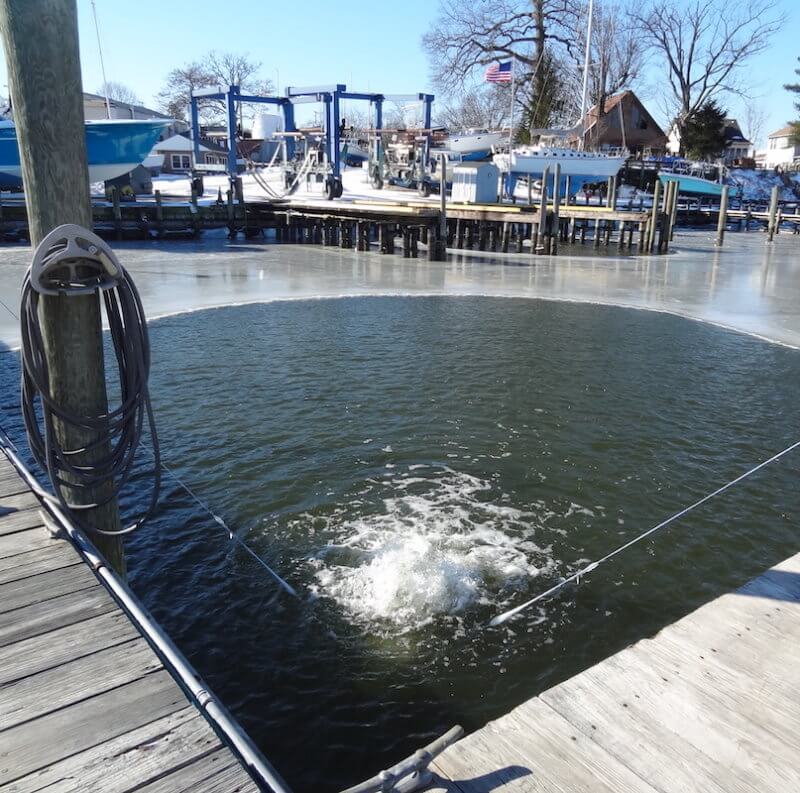
Lake De-icing & Permanent Dock Prep for Winter
When it comes to marinas and lakes in the Midwest, it is all too easy to fall into the trap of thinking that there is no need for ongoing care during the winter months. After all, besides the occasional winter fishing, no one uses their docks once temperatures fall. But it’s important to realize well ahead of time that without conducting the proper preventative care, ice can wreak havoc with your docks, hoists, and boats that have been left in the water through the winter, resulting in thousands of dollars in damage. In waterfront communities, this can create liabilities, potentially reduce property values, and enrage residents.
When warmer temperatures return, aquatic experts want you to make the most of your time on the water, rather than wasting it dealing with annoying and costly repairs. You can’t stop ice from forming, but you do have access to professional tools and technologies to prevent it when winter arrives.

What Can Happen If You Don't Prepare Your Docks & Marinas for Winter?
Ice forms on the surface of lakes at around 39 degrees Fahrenheit. At this temperature, the warmer water at the surface sinks toward the bottom, pushing the colder water to the top. Ice then develops as a result of falling air and water temperatures. A primary driver of damage to marina structures, boats, and waterfronts throughout winter is due to record-high water levels.
Other lesser-known drivers are tides and seiches (pronounced saysh), which are wave-like manifestations that occur as a result of wind or atmospheric changes. When they appear in marinas, bays, and, in some instances, lakes, seiches can compound existing problems from ice formation around permanent structures.
Winter ice damage that can occur to your permanent docks include:
- Warping of your dock
- Breaking and heaving of the dock structure
- Mechanical and structural damage to docked boats
What Does De-icing Look Like for Docks In Winter?
The bulk of damage caused during the winter months is largely due to ice forming along boats and pilings. Therefore, the best way to mitigate these damages is by preventing ice from forming at all, a process referred to as ‘de-icing’.
De-icing can be accomplished in several different ways depending on the depth of your waterfront, whether it is affected by high water, tides or seiches, the past seasons’ rainfall, and expected temperatures. The most common and environmentally sound method is simply agitating the warm and cold water and propelling that warmer water towards the surface in lieu of cold.
How to Choose the Right De-Icer for Your Dock
De-icing can be accomplished in several ways depending on the unique characteristics of your waterbody. The two main types of de-icers include:
- Dock-mounted de-icing units or circulators, also known as agitator de-icers or dock de-icers
- Subsurface aeration systems, also known as lake bubblers
One important question is what size of de-icer you need for a lake or pond. For example, in areas of six feet or more, a propeller-like de-icer can be installed to create an artificial current that works by using a propeller to draw warmer subsurface water to the surface, creating a continuous flow of warmer water to prevent ice from forming.
Alternatively, if you have a smaller area of focus, you could opt for a “forced air” de-icing system. These utilize self-weighted air hoses on the bottom of the lake floor that pump out low-pressure, high-volume air through holes to bring warmer water to the surface. Like with the propeller system, these bubbles create a small amount of agitation on the surface and, with the warmer water, keep the above area free of ice. These subsurface aeration systems don’t stir up the bottom lake sediment, which helps decrease the amount of thin ice, and also can be placed more precisely than dock-mounted de-icers or agitator de-icers.
Tips to Safely Install and Use De-icers for Docks, Lakes, and Ponds
While creating areas free of ice is vital for maintaining the structural integrity of your permanent docks, de-icing solutions that are not properly managed can result in:
- Thin ice areas that are dangerous for ice skaters, skiers, and ice sailors
- Larger than necessary open waters which lead to greater ice damage during spring melts
- Negatively impact algae and aquatic plant growth, as well as the living conditions of fish by altering large areas of a lake’s temperature and lighting
Create A De-icing Plan to Protect Your Assets
Creating a comprehensive de-icing plan for your lake or marina is not as simple as just installing a couple of de-icers around the dock. It’s important to take into consideration the goals of de-icing, the size of the lake, the size of the area you should be de-icing, the aquatic conditions of the lake, local laws and required permits that may affect de-icing operations, and the wintertime use of the lake.
Your lake management partner can guide you through the planning process and help take away the stress and time dedicated to monitoring harmful ice formation – and dealing with the aftermath – year after year. An expert will ensure you have the tools to keep boat owners, anglers, and residents safe and proud to call your community home, no matter the season.
We're Here to Help. Learn How!
Contact Us to Protect Your Lake This Winter
Call us at 888-480-5253 or complete the form below to connect with an aquatic management expert.
SOLitude Lake Management is a nationwide environmental firm committed to providing sustainable solutions that improve water quality, enhance beauty and preserve natural resources.
SOLitude’s team of aquatic scientists specializes in the development and execution of customized lake, stormwater pond, wetland and fisheries management programs. Services include water quality testing and restoration, algae and aquatic weed control, installation and maintenance of fountains and aeration systems, shoreline erosion control, muck and sediment removal and invasive species management. SOLitude partners with homeowners associations, golf courses, private landowners, businesses and municipalities. SOLitude Lake Management is part of Rentokil, a leading business services company, operating across the United States, Canada and Puerto Rico.
For more information, visit SOLitude Lake Management at solitudelakemanagement.com, and connect on Facebook, LinkedIn and Twitter.











